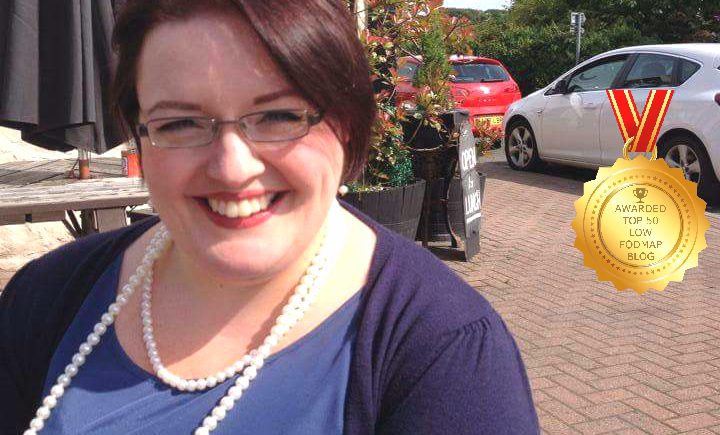Hello and welcome to The Fat Foodie! My name is Jane and I Iive in Stirling, Scotland.
I really enjoy cooking low FODMAP food and trying new FODMAP friendly recipes, but I frequently hear from people that they won’t try to cook low FODMAP recipes themselves because it seems too hard and that they don’t feel that they have the skills to create a dish from scratch, a belief which is often very wrong.
Most FODMAP friendly home cooking isn’t hard and can be considerably healthier than a shop-bought version, so the mission statement of The Fat Foodie is to help make cooking low FODMAP food easy, relatively fast, and uncomplicated. I aim to provide an uplifting, visually celebratory experience of food while offering inspirational ideas for you to take forth in your own FODMAP friendly culinary adventures.
I create recipes which use low FODMAP foods, a system of eating which is designed to help IBS sufferers. As a result, most of my recipes are gluten-free and are either dairy-free or low in lactose.
Researchers at Monash University in Australia discovered that in the majority of cases, IBS was triggered by particular types of carbohydrates called FODMAPs:
Fermentable: (In which the bacteria in your gut breaks down undigested carbohydrates to create gas)
Oligosaccharides: (which include Fructo-oligosaccharides (FOS) which are found in wheat, rye, onions and garlic and Galacto-oligosaccharides (GOS) which are found in legumes/beans and pulses)
Disaccharides: (found in lactose products, such as milk, cheese and yoghurts)
Mono-saccharide: (which is fructose, a carbohydrate found in honey, apples, and high fructose corn syrups)
and Polyols: (Sugar polyols, such as sorbitol and mannitol, which are found in some fruit and vegetables and are used as artificial sweeteners).
Now, I know that’s quite a lot of science to digest (pardon the pun), but bear with me.
Essentially there are low FODMAP foods and high FODMAP foods. The low FODMAP foods contain carbohydrates which are easy for the body to digest, whereas the high FODMAP food carbohydrates cannot be digested properly and will therefore create diarrhoea and gas. Monash University suggests that under the supervision of a nutritionist you should dedicate 2 to 6 weeks to only eating low FODMAP foods. (This is known as the exclusion period.) After that time, high FODMAP foods can start to be introduced into the diet in small quantities, category by category, to see how well the body can tolerate them.
Monash University have a great short film on Youtube which explains how FODMAPs work in the body of an IBS sufferer. You can watch it here. They also have a FODMAP app that you can download which contains a brilliant explanatory guide, a comprehensive list of low and high FODMAP foods, a collection of low FODMAP recipes and a shopping list creator. I’ve found it very useful indeed.
Disclaimer: As with any medical issue, it is important that you speak to your doctor or health professional before self-diagnosing yourself with IBS because there are a number of health conditions which have symptoms that mirror that of IBS. Therefore, it’s best to consult your doctor to rule out any illnesses which are more serious than IBS. Also, my website is not intended to be used as a full guide to the low FODMAP diet, it is simply my way of sharing low FODMAP recipes with other FODMAP diet followers who have received a diagnosis of IBS. If you think you would benefit from following the low FODMAP diet you should first speak to a doctor or registered dietitian.
I’d love to hear your feedback on my website, so please feel free to get in touch with me and if there are any recipes or types of food that you’d like to see featured then please let me know. Also, I use Amazon and Casa De Sante’s affiliate programmes to monetise my blog, but anything I recommend I do so because I genuinely approve of the product.
Now, let’s go have some adventures in the world of food!
With lots of love, The Fat Foodie xxx
 Copyright protected by Digiprove © 2017-2018
Copyright protected by Digiprove © 2017-2018
